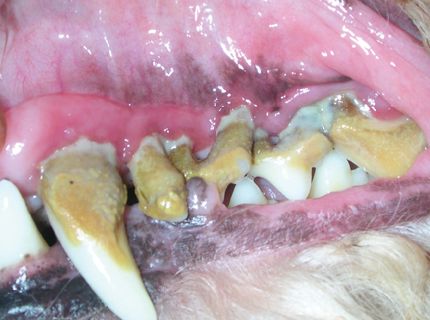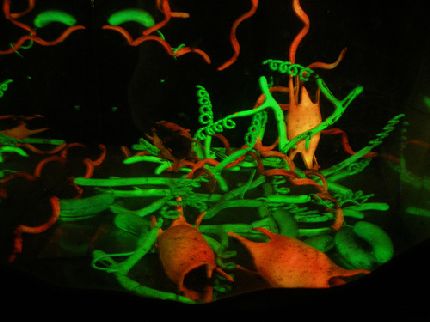1. Andrews
J,
Nadjm B, Gant
V,
Shetty N. outpatient pneumonia. Curr opino PULM Med. 2003, 9:17580. 2. Niederman
MS. Community acquired pneumonia: User contradictions, Part 1, practical advice on the latest recommendations. J Respir Dis buy strattera. 2002; 23:107. 3. Arias E
�
Anderson, R., Kung
NA
Murphy SL,
Kochanek KD. Deaths: final data for 2001. Natl Vital Stat Rep. 2003 52:1115. 4. Hall
MJ,
DeFrances CJ. 2001 National discharge test. Adv Data. 2004:120. 5. File
TM. Community acquired pneumonia. Lancet. 2003, 362:19912001. 6. Pneumonia fish D.. In: Pharmacotherapy self assessment program. 4th ed. Kansas City: American College of Clinical Pharmacy, 2002. 7. Beovic
B,
Bonak B,
Kyosei D,
Avsic-Zupanc

<< T >> << Kreft >> S
Lesnicar G,
al. Etiology and clinical manifestations of mild community acquired bacterial pneumonia. Eur J Clin Microbiol infect Dis. 2003 22:58491. 8. Niederman
MS, Mandell
Los Angeles,
Anzueto,
Bass JB,
Broughton WA,
Campbell, D.,
al. American thoracic society. Management of adults with community acquired pneumonia. Diagnosis, assessment of severity, antibiotic therapy and prophylaxis. Am J Respir Critical Care Med. 2001, 163:173054. 9. Mandell
Los Angeles,
Bartlett JG, Dowell
SF,
File TM
Jr.
Musher DM
�
,
Whitney C. Infectious Diseases Society of America. Update practical manuals of community acquired pneumonia in immunocompetent adults. Clin infect Dis. 37:140533 2003. 10. Sopena
N,
�
Sabri M Pedro-Botet
ML,
Manterola JM,
<< ; Matas >> L
Dominguez J,
al. Prospective study of pneumonia of bacterial etiology in adults. Eur J Clin Microbiol infect Dis. 1999, 18:8528. 11. Campbell SG
,
Marrie TJ,
Anstey R,
Dickinson G,
Ackroyd-Stolarz
S. The contribution of blood cultures to the clinical management adult patients admitted to hospital with community acquired pneumonia: prospective observational study. Breasts. 2003, 123:114250. 12. Feagan
BG. Controlled study the critical path for the treatment of pneumonia: CAPITAL study. Community acquired pneumonia intervention court Score levofloxacin. Pharmacotherapy. 2001, 21 (part 2): S8994. 13. Priebe
DL,
�
Chambliss ML. Blood cultures are not useful for pneumonia. J Fam RUF. 52:599600 2003. 14. Sopena
N,
Sabri-Leal
M,
Pedro-Botet
ML,
�
Padilya E Dominguez
J,
Morer J,
al. Comparative analysis of clinical manifestations of Legionella pneumonia and other community acquired pneumonia. Breasts. 1998; 113:1195200. 15. Visual
MJ,
Auble TE,
Yealy DM,
Hanusa BH,
Weissfeld LA,
Singer DE,
al. Prediction rule to identify low-risk patients with community acquired pneumonia. N Engl J Med. 1997, 336:24350. 16. Visual
MJ, Hugh LJ
,
Medsger A
Li YH,
Ricci EM,
Singer DE,
al. The decision of hospitalization of patients with community acquired pneumonia. Results from the pneumonia patients results of the research team cohort. Arch internal Med. 1997, 157:3644. 17. Visual
MJ,
Pratt HM,
Obrosky DS,
Lave JR, McIntosh LJ
,
Singer DE,
al. Relationship between duration of hospital stay and costs of treating patients with community acquired pneumonia. Am J Med. 2000, 109:37885. 18. Goss CH
Rubenfeld GD,
Park DR,
Shcherbyn VL, Goodman
MS,
Root RK. The cost and frequency of social comorbidities in low-risk patients with community acquired pneumonia admitted to state hospitals. Breasts. 2003, 124:214855. 19. Ho LK
,
Keanh LT. Hospitalized low-risk pneumonia: results and potential for savings. Respirology. 1999, 4:3079. 20. Ruiz
M,
Ewig S,
Marcos MA,
Martinez JA,
Arancibia F,
Mensa J,
al. Etiology of pneumonia: impact of age, comorbidities and severity. Am J Respir Critical Care Med. 1999, 160:397405. 21. Arnold
FW,
Ramirez JA, McDonald
LC,
Xia EL. Hospitalization for pneumonia: pneumonia severity index to clinical decisions. Breasts. 2003, 124:1214. 22. Roson
B,
Carratala J,
Dorca J,
Casanova,
Manresa F,
Gudiol F. Etiology, reasons for hospitalization, risk classes, and the results of community acquired pneumonia in patients hospitalized on the basis of conventional criteria for admission. Clin infect Dis. 2001 33:15865. 23. Mandell
Los Angeles. Community acquired pneumonia. Etiology, epidemiology and treatment. Breasts. 1995, 108 (Supplement): S3542. 24. Mandell
Los Angeles. Antibacterial therapy community acquired pneumonia. Clin Chest Med. 1999 20:58998. 25. Mandell
Los Angeles. Antimicrobial approaches to therapy of pneumonia. Curr opino PULM Med. 1996; 2:21827. 26. Mandi L.
,
�
Oldach D,
Auwaerter PG,
Gaydos CA, Moore
RD,
Bartlett JG,
al. CAP team for Hopkins. Implications for macrolide treatment in pneumonia. Breasts. 1998, 113:12016. 27. Mandell
Los Angeles. Antibiotics for pneumonia therapy. Med Clin North Am. 1994; 78:9971014. 28. Mandell
Los Angeles,
Marrie TJ, Grossman RF
�
Chau-AW,
Hyland RH. pneumonia for the Canadian Working Group. Canadian guidelines for initial management of pneumonia: evidence-based update of the Canadian Infectious Diseases Society and the Canadian thoracic society. Clin infect Dis. 31:383421 2000. 29. Heffelfinger
JD, Dowell
SF, Jorgensen
JH,
�
Kluhman CP IDB LR,
Musher DM,
al. Management of pneumonia in the era of pneumococcal resistance: a report of drug-resistant pneumococcus
Working Group. Arch internal Med. 2000; 160:1399408. 30. Mandell
Los Angeles, Bergeron
MC,
Gribble MJ,
al. Sequential antibiotic therapy: effective cost management and patient care. Can J infect Dis. 1995, 6:306
31. Angles
JL,
Capitano B,
Nicolau DP. Cost effective approaches to the treatment of community acquired pneumonia in the era of resistance. Pharmacoeconomics. 2002 20:51328. 32. Jones RN
�
,
Biedenbach DJ,
Beach ML. Influence of patient age on the susceptibility of pneumococcus model
isolates in North America (20002001): report of the SENTRY antimicrobial surveillance program. Diagn Microbiol infect Dis. 2003, 46:7780. 33. Behh
EJ,
Barclay ML, Kirkpatrick
CM. Therapeutic monitoring of antimicrobial agents. Br J Clin Pharmacol. 2001, 52 (Supplement 1): S3543. 34. Milkovich
G. Intravenous to oral switch therapy community acquired pneumonia: INOVA Health System experience. Pharmacotherapy. 2001, 21 (part 2): S838. 35. Weingarten
SR,
�
Riedinger MS, Varis
G,
Noah MS,
Belman MJ,
�
tables Meyer al. Identifying low-risk hospitalized patients with pneumonia. Effects of early conversion of oral antibiotic therapy. Breasts. 1994; 105:110915. 36. Siegel
RE,
Halpern NA,
Almenoff PL, Lee
Cashin R,
,
Green JG. Prospective, randomized trial in a hospital IV. antibiotics for pneumonia. The optimal duration of therapy. Breasts. 1996; 110:96571. 37. Ramirez
JA,
Vargas S,
Ritter GW, Rosehip
ME,
Wright,
Smith S,
al. Early switch from intravenous to oral antibiotics and early discharge from hospital: prospective observational study of 200 patients with community acquired pneumonia. Arch internal Med. 1999, 159:244954. 38. Coffey
RJ, Richards
JS, Remmert
CS, SS Leroy
�
Schoville RR,
Baldwin PJ. Introduction to critical paths. Qual Health care managers. 1992; 1:4554. 39. Marrie TJ
�
,
Lau CY,
Wheeler SL, Wong
CJ,
Vanervoort MK,
Feagan BG. Controlled study the critical path for the treatment of pneumonia. Investigators CAPITAL study. Community acquired pneumonia intervention court Score levofloxacin. JAMA. 2000, 283:74955. .




